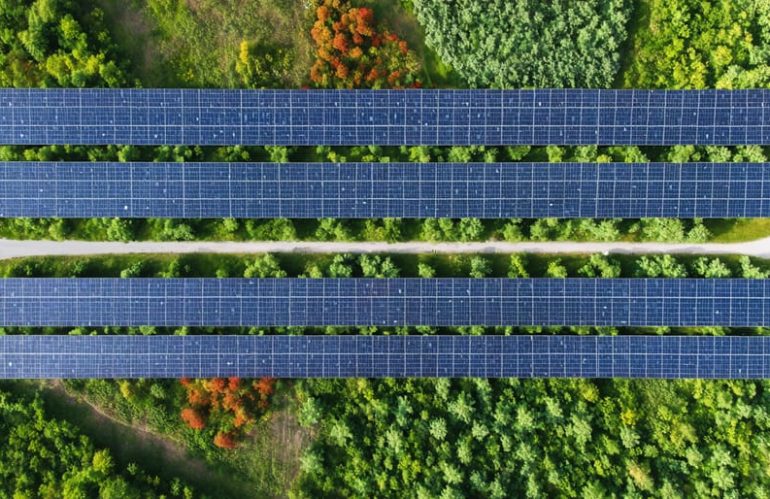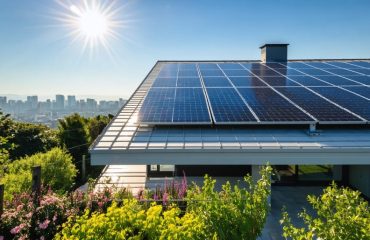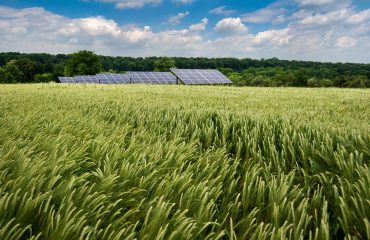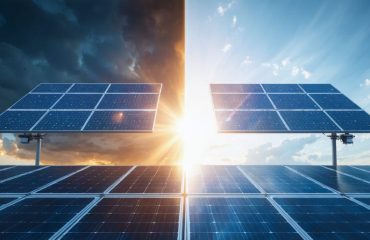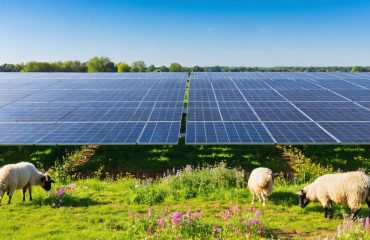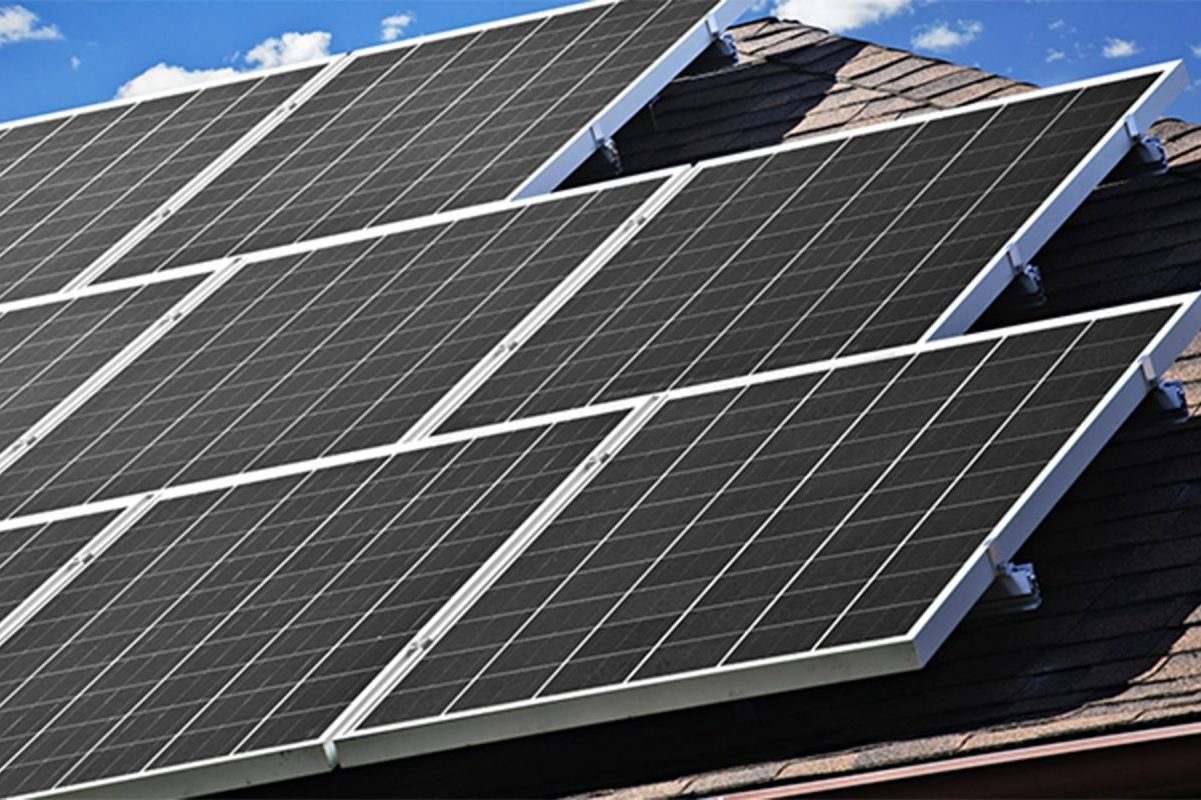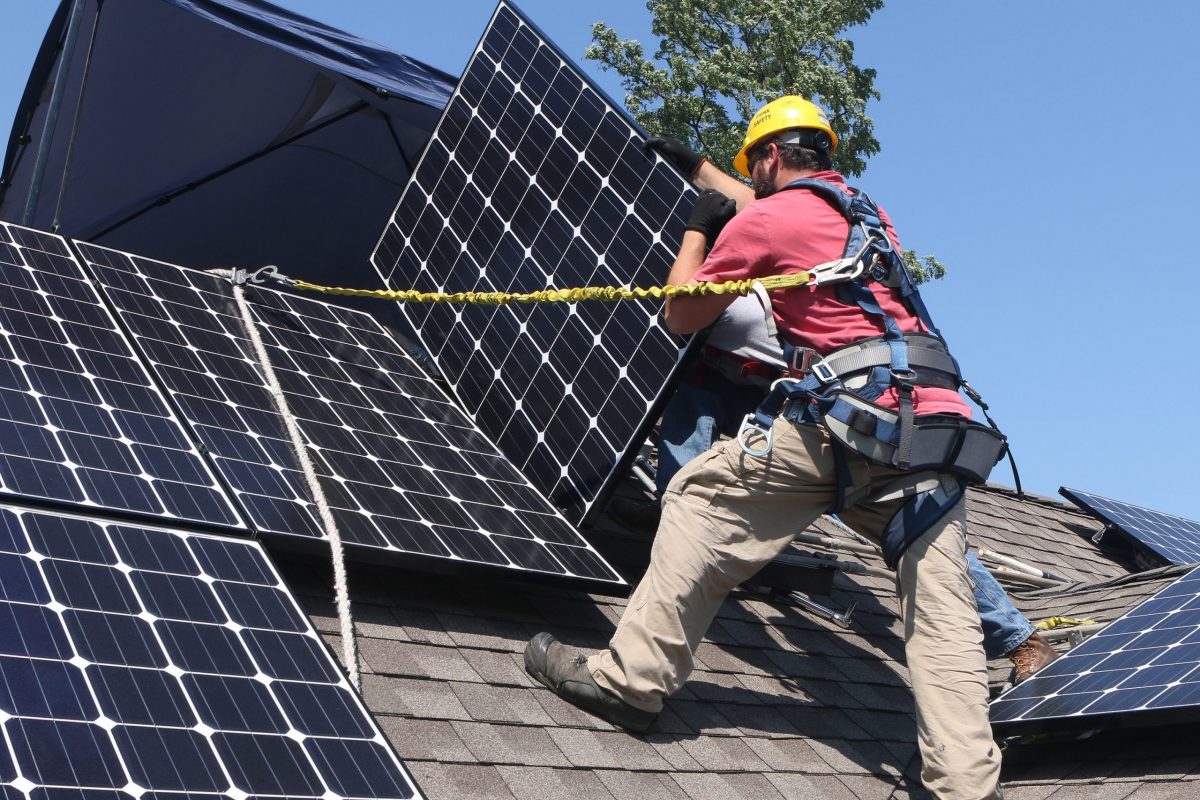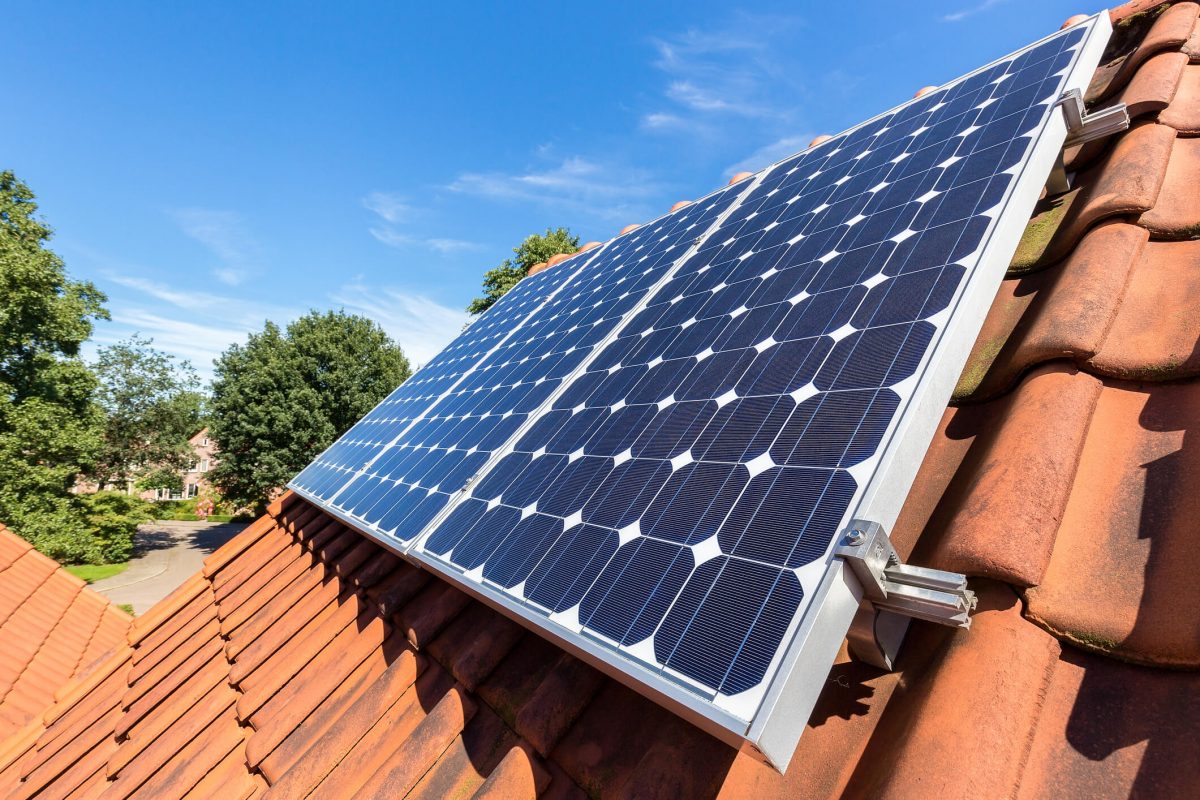Solar farms represent a crucial intersection between renewable energy advancement and environmental stewardship. As these sprawling clean energy installations continue to multiply across landscapes worldwide, their environmental impact deserves careful consideration. While solar farms significantly reduce carbon emissions and offer a sustainable alternative to fossil fuels, they also transform local ecosystems in complex ways. From altered wildlife habitats to changes in soil composition and water flow patterns, these facilities create both challenges and opportunities for environmental conservation.
Recent studies have shown that thoughtfully designed solar installations can actually enhance biodiversity, creating sanctuaries for native plants and pollinators while generating clean electricity. However, poorly planned developments may disrupt existing ecosystems and migration patterns. Understanding these effects is essential as we work to optimize solar farm designs that maximize clean energy production while minimizing ecological disruption.
This balanced perspective on solar farms’ environmental impact helps us develop better strategies for sustainable energy development, ensuring that our pursuit of renewable energy aligns with broader environmental protection goals.
How Solar Farms Interact with Local Ecosystems
Land Use Changes
The conversion of land into solar farms represents a significant change in land use that can have an impact on local ecosystems. While some habitats may be temporarily disrupted during construction, many solar farms are strategically placed on already-disturbed lands such as former agricultural fields or brownfield sites, minimizing their environmental footprint.
Interestingly, solar farms can create new opportunities for habitat enhancement. The spaces between solar panels often become havens for native plants and pollinators when properly managed. Many facilities are now incorporating dual-use strategies, such as planting wildflowers or allowing sheep grazing between panels, which helps maintain biodiversity while generating clean energy.
Smart planning and site selection are crucial. Developers increasingly avoid sensitive ecological areas and instead focus on land that’s already been modified by human activity. This approach, combined with wildlife-friendly design features like elevated panels and wildlife corridors, helps ensure that solar farms can coexist harmoniously with local flora and fauna while contributing to our renewable energy future.
Wildlife Movement Patterns
Solar farms can influence how wildlife moves through their natural habitats, but many animals adapt well to these changes. Research shows that most species establish new movement patterns around solar installations, treating them as part of their environment. Larger animals like deer and coyotes typically create new pathways around the perimeter of solar farms, while smaller creatures like rabbits and foxes often find ways to move through the installations using gaps between panels.
Many solar facilities now incorporate wildlife corridors – designated pathways that allow animals to maintain their natural movement patterns. These corridors are carefully planned spaces between solar arrays that match local wildlife needs. Some facilities even enhance these passages with native vegetation, creating mini-ecosystems that benefit local wildlife.
Interestingly, birds have shown remarkable adaptability to solar installations. While they may initially alter their flight patterns, most species quickly adjust their routes. Some facilities have reported birds using the panels as temporary resting spots during migration, suggesting that solar farms can become integrated parts of their journey paths when properly designed.
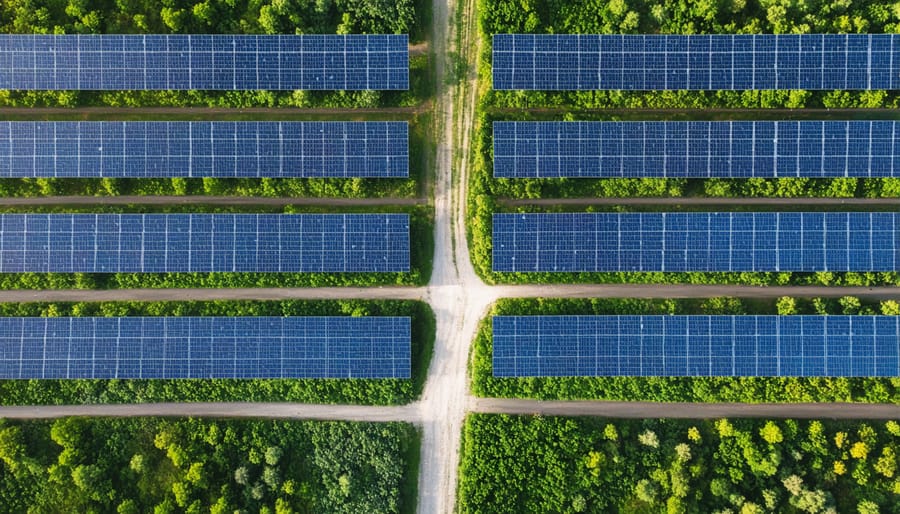
Positive Environmental Benefits
Creating New Habitats
While solar farms primarily generate clean energy, they also create unexpected sanctuaries for wildlife. Through smart land management practices, these installations can become thriving ecosystems that support local biodiversity.
The spaces between solar panels provide excellent shelter for small mammals, birds, and insects. Ground-nesting birds particularly benefit from these protected areas, using them as safe breeding grounds away from predators. The panels themselves offer shade and shelter, creating microhabitats that help maintain soil moisture and support diverse plant life.
Many solar farms now incorporate native wildflower meadows and pollinator-friendly plants beneath and around the panels. These flowering plants attract bees, butterflies, and other beneficial insects, contributing to local ecosystem health. The combination of shelter and vegetation creates ideal conditions for various species to thrive.
Sheep grazing has become increasingly common on solar farms, offering a win-win solution for land management and agricultural use. The sheep naturally maintain vegetation height while benefiting from the shade provided by panels. This approach reduces mechanical mowing needs while supporting local farming communities.
These new habitats demonstrate how renewable energy infrastructure can coexist with and even enhance local ecosystems, proving that solar farms can be both energy producers and wildlife sanctuaries.
Native Plant Integration
Integrating native plants around solar installations offers multiple environmental benefits while enhancing the overall sustainability of solar farms. When thoughtfully planned, these areas can transform into thriving ecosystems that support local wildlife and improve soil health.
Native plants require minimal maintenance and irrigation since they’re naturally adapted to local climate conditions. This reduces water consumption and maintenance costs while creating natural habitats for pollinators like bees and butterflies. These plants also help prevent soil erosion, a common concern in large-scale solar installations, by establishing deep root systems that hold soil in place.
The strategic placement of native vegetation can actually enhance solar panel efficiency. By reducing dust through soil stabilization, these plants help keep panels cleaner, which maintains optimal energy production. Additionally, native ground cover can help regulate local temperatures, potentially improving solar panel performance during hot weather.
Many solar farms are now incorporating flowering meadows and native grasses, creating dual-use spaces that benefit both energy production and local biodiversity. These plant communities provide essential resources for wildlife while ensuring the land remains productive beyond its primary purpose of generating clean energy. This approach demonstrates how solar energy development can work in harmony with natural ecosystems rather than competing with them.
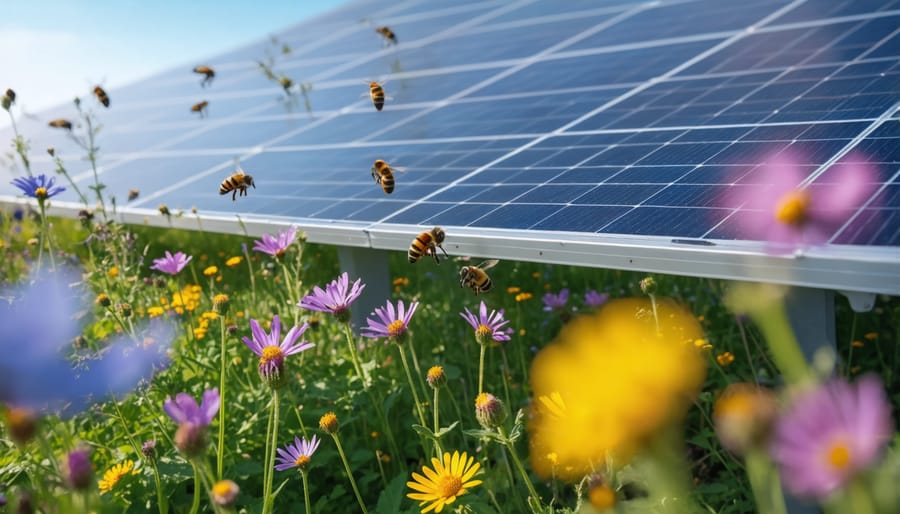
Smart Design Solutions
Wildlife-Friendly Fencing
Modern solar farms are incorporating wildlife-friendly fencing designs that strike the perfect balance between site security and environmental responsibility. These innovative fencing solutions feature raised bottom edges that allow small animals like rabbits, foxes, and other native species to pass underneath freely. The gaps are carefully sized to permit wildlife movement while preventing unauthorized human access.
Many facilities now use high-visibility wire meshes or markers that help prevent bird collisions, especially during migration seasons. Some solar farms even incorporate native vegetation corridors along fence lines, creating natural pathways for wildlife movement around the facility.
Strategic fence placement also plays a crucial role, avoiding known migration routes and maintaining connectivity between important habitats. Regular monitoring helps ensure these passages remain clear and functional throughout the year. Additionally, some facilities include special crossing points or wildlife gates at key locations, allowing larger animals safe passage through designated areas.
These thoughtful fencing approaches demonstrate how solar energy development can coexist harmoniously with local wildlife while maintaining essential security measures.
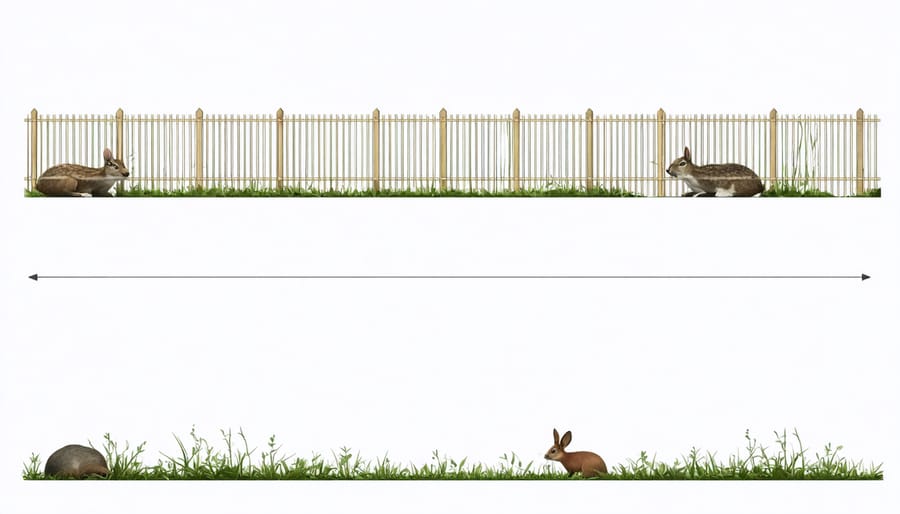
Pollinator Gardens
Solar farms are increasingly embracing a dual-purpose approach by incorporating pollinator gardens between and around solar panels. These carefully planned gardens feature native wildflowers, flowering herbs, and other nectar-rich plants that provide essential habitat for bees, butterflies, and other beneficial insects. This integration not only supports local ecosystem health but also enhances the overall efficiency of nearby agricultural lands through improved pollination services.
Research shows that pollinator gardens in solar installations can increase crop yields in adjacent farms by up to 30%, creating a win-win situation for both energy production and agriculture. These gardens also help maintain soil stability, reduce erosion, and require less maintenance than traditional gravel or turf grass commonly used in solar installations.
Popular pollinator-friendly plants include purple coneflower, black-eyed susan, and various native wildflowers that bloom throughout different seasons. These gardens create corridors for insect movement and provide refuge for declining pollinator populations, particularly in areas where natural habitat has been reduced by development.
The addition of pollinator gardens transforms solar farms into multi-functional spaces that generate clean energy while actively contributing to biodiversity conservation and agricultural productivity.
Water Management
Effective water management is a crucial aspect of solar farm operations, and modern facilities employ several innovative strategies to minimize their impact on local water resources. Most solar farms use dry-cleaning methods, such as robotic cleaners with specialized brushes, which significantly reduce water consumption compared to traditional cleaning methods.
When water is necessary, solar farms implement smart irrigation systems that optimize water usage during panel cleaning. These systems often include water recycling mechanisms that capture, filter, and reuse cleaning water, reducing overall consumption by up to 90%.
Drainage systems at solar farms are carefully designed to prevent soil erosion and maintain natural water flow patterns. Many facilities incorporate permeable surfaces between panel rows and utilize native vegetation to help manage stormwater runoff. These plantings not only assist with water absorption but also provide additional environmental benefits.
Some innovative solar installations even incorporate rainwater harvesting systems, collecting precipitation from panel surfaces for maintenance purposes. This approach helps reduce dependence on local water supplies while ensuring panels remain clean and efficient. Additionally, modern solar farms often feature monitoring systems that track water usage and weather patterns, allowing operators to schedule maintenance during optimal conditions.
The development of solar farms represents a crucial step toward renewable energy adoption, but it requires thoughtful planning to minimize environmental impact. By implementing wildlife corridors, maintaining native vegetation, and using smart design principles, solar facilities can coexist harmoniously with local ecosystems. The evidence shows that when properly managed, solar farms can actually enhance biodiversity by creating protected habitats and supporting pollinator populations.
The key lies in striking the right balance between clean energy production and environmental stewardship. Through continued research, innovative design solutions, and collaboration between developers and environmental experts, we can maximize the benefits of solar energy while protecting our natural heritage. Many successful projects have demonstrated that solar farms can become valuable additions to the landscape, supporting both our clean energy goals and local wildlife.
As we move forward with solar development, it’s essential to maintain this balanced approach, ensuring that each new project contributes positively to both our energy needs and environmental health. With careful planning and proper management, solar farms can help create a more sustainable future while preserving and even enhancing local ecosystems.

